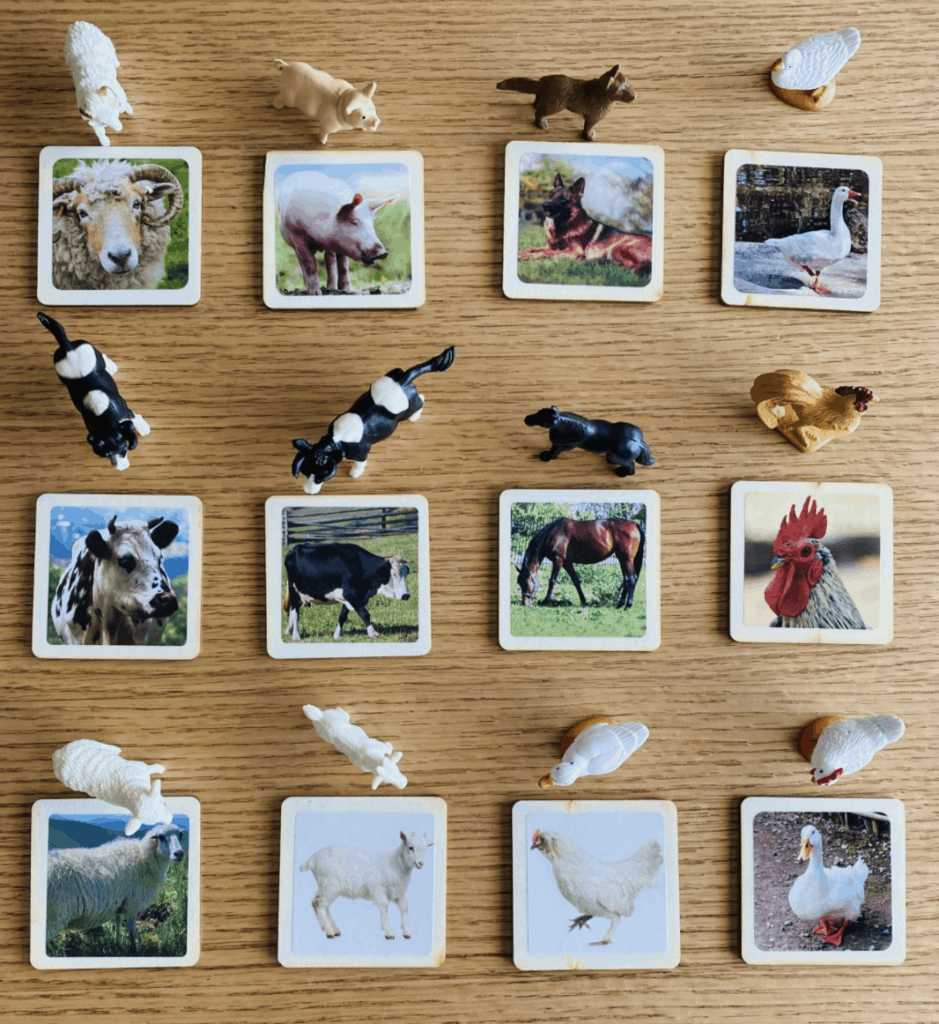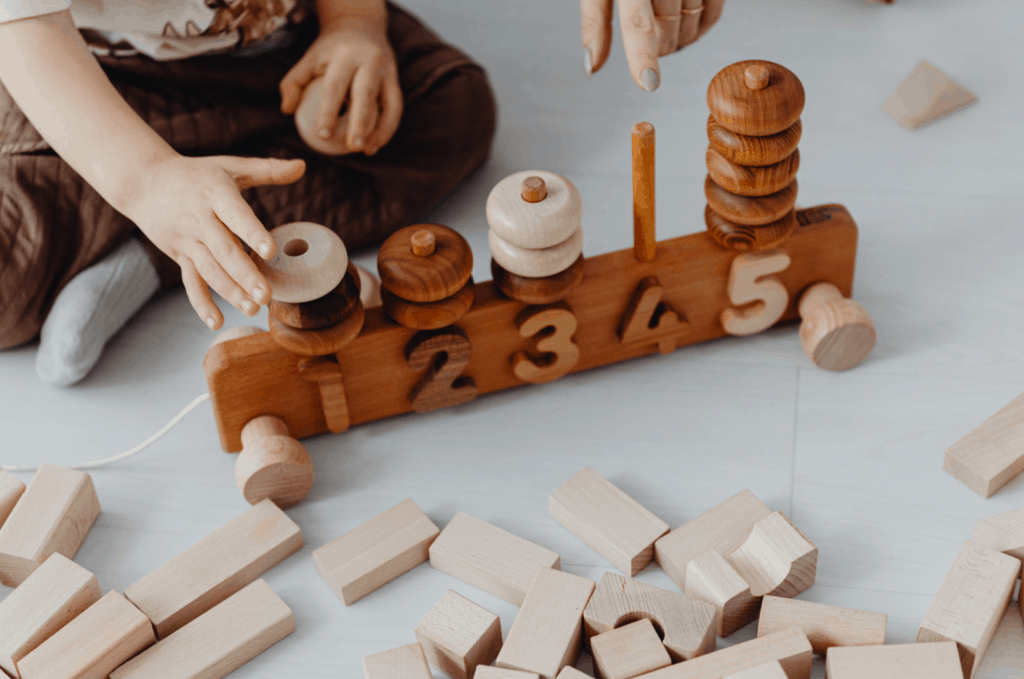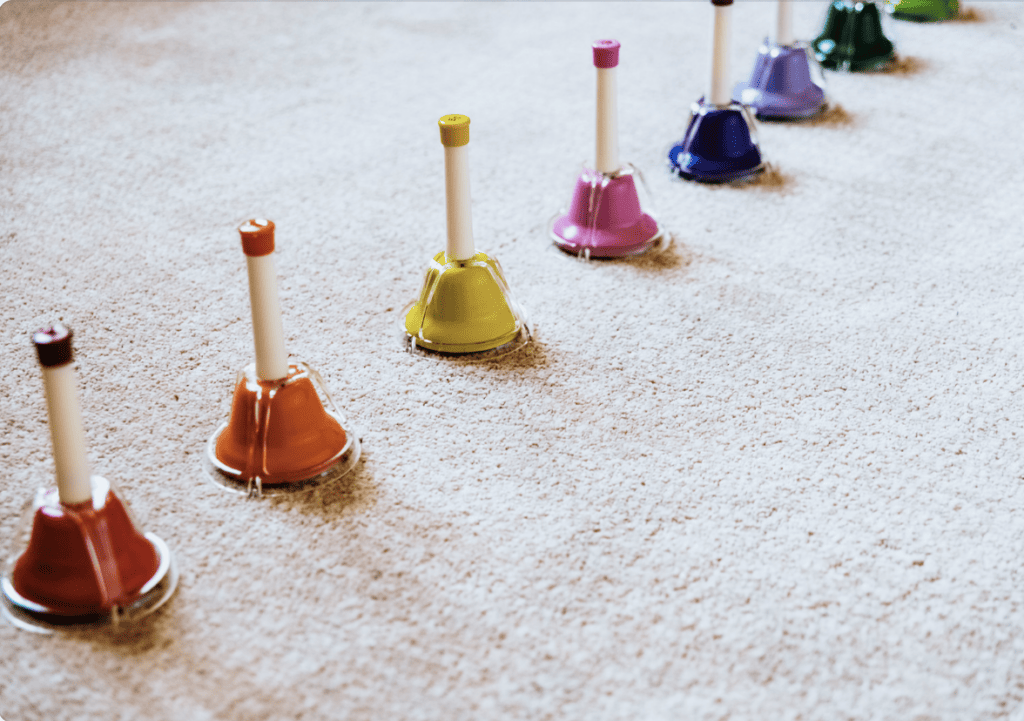Montessori sensitive periods are periods in a child’s life where they are the most receptive to processing and learning new life skills. Each period occurs within a certain age range, allowing parents the ability to know the best times they can assist in the growth and development of their child.
There are a total of 11 different sensitive periods that have been identified by Maria
- Order
- Movement
- Language
- Social Behavior
- Assimilation of Images
- Small objects
- Refinement of senses
In this guide, we will cover everything you need to know about the sensitive periods of development in
On This Page…
- What Are The Montessori Sensitive Periods?
- How to Help Your Child Learn the Most Through Each Sensitive Period
- Why It Is Important to Support Your Child Through These Sensitive Periods
- How Can You Tell When Your Child is Entering a Sensitive Period?
- The Montessori Method Comes Down to Supporting Your Child’s Individuality
What Are The Montessori Sensitive Periods?
Overall, the
- Language- Birth to 6 years
- Refining the senses- Birth to 5 years
- Movement- Birth to 4 ½ years
- Order- 1 year to 5 years
- Small objects- 1 year to 3 years
- Assimilation of Images- Birth to 6 years
- Grace and courtesy– 2 years to 5 years
- Music- 2 years to 6 years
- Reading- 3 years to 5 ½ years
- Writing- 3 ½ years to 5 ½ years
- Mathematics- 4 years to 6 years
As you can see, each sensitive period has a particular time frame in which a parent can then guide the development and provide the appropriate stimulation for their child to provide support.

How to Help Your Child Learn the Most Through Each Sensitive Period
Each period has a certain window for your child to develop their skills which is why you must seize the opportunity to do so when you observe the beginning of each period. Not providing or allowing the appropriate stimulation during these critical times can result in a slower progression of these skills.
However, this period is gauged by the child’s interest. For instance, children seem to be fascinated by small objects between the ages of 1 and 3, therefore if you feed into the curiosity of your child they will be more receptive to the information because of their interest in small objects.
In addition, each sensitive period has different needs where support is concerned. Therefore you need to be familiar with each period and understand the needs of your child during these times.
The Sensitive Period of Language in Montessori
Maybe you have seen pregnant mothers put headphones on their bellies, or read out loud to their pre-born babies. This is just one of many ways to aid in the development of your child’s language skills.
The claim is that children, while in utero, are able to hear their surroundings. This has been scientifically proven. As a matter of fact, a child’s auditory system begins developing by the 18th week of pregnancy up until about 6 months of age.
This is important information to know because listening is an important aspect of language development. Babies usually begin speaking by mocking the sounds and the mouth movements of their parents, or the person talking to them. But how do you keep the momentum going? What can you do to encourage them during this fragile time?
Here are several things that you can do to aid in the progression of this essential life skill:
Before birth to 4 months old:
- Play music or read aloud while your baby is in utero
- Respond to baby talk, or baby babble
- Have one-sided conversations with them
- Repeat words such as Mama, Dada, Duckie, Doggy, etc
- Make eye contact while talking
- Learn some basic ASL (American Sign Language) and begin signing to your child while you are speaking.
- Infants can learn sign language before they are ever able to speak. This is a pretty common way for parents to communicate with their babies. Make sure that when you sign something, you verbalize it and then present them with it. Take milk for instance; sign it and say it before feeding time. This helps them to make the connection between the word, and the object.
4 months old to 12 months old:
- Encourage them to speak by getting them to repeat a certain word
- Be sure to say it slowly so they can hear the way you enunciate the words, and so they can follow your mouth formation.
- Around 8 months old, begin encouraging replies. This can be done by asking a simple yes or no question
- TV and computer time should be limited, but it is okay to help by turning on an educational infant show once in a while
- Come up with a simple 2 sentence song and sing it to them frequently
12 months to 3 years:
- Build upon your child’s vocabulary, for instance, if your child says, “Look!” and points, respond with what you see. “Oh! Yeah, you see the bird? That’s a bird. The bird is flying.”
- Introduce requests, “Will you pick up your toys, please?” And follow this by beginning to pick up the toys and putting them away.
- Patiently correct any words or sentences without criticizing your child
- Pay attention when your child is talking to you
3 years to 6 years:
- Encourage conversation about observations they’re having by asking them questions
- Introduce more difficult requests while encouraging replies
- Ask for their input on activities
- Have them advocate for themselves instead of anticipating what they want or need
- Create flashcards with photos to enhance their vocabulary
By having a conversation with your child and making that connection, it allows them to open up further and absorb the information that they’re learning.
How to Assist Your Child in Refining their Senses
Originally, we’ve had the classic five senses:
- Smell
- Touch
- Taste
- Sound
- Vision
Montessori focuses on these as well as several others to help your child focus on developing each sense to their best ability. Here are several others in addition to the five basic senses:
- Baric- Observation of weight and pressure
- Thermic– Sensing temperatures (more here)
- Stereognostic– Relying on muscle memory to know what an object is by feeling it, without using any of the other senses.
In addition to expanding the list of senses that are recognized,
- Mystery bag– A child is supposed to guess what is in the bag by touch only
- Color Tablets– This allows them to practice sorting by different shades of the same color as well as by colors in general
- Cylinders– This helps them to order certain cylinders according to size

Furthermore, to help a child immerse themselves into the refinement of their senses, there are several things that a parent can do to guide this process:
- If a child expresses that they do not prefer certain food, do not force them to try it but instead redirect with a different dish.
- Present them with different shades of the same color and ask your little one to put them in order from lightest to darkest
- Have a few bowls full of water with different temperatures. Have them dip their hands in each one to experience the feeling each one has to offer.
There are many different ideas as to how you can help your child refine their senses, it just takes a bit of creativity. The idea behind it is to provide an environment that has the necessary resources available to them.
Of course, the resources will be different depending on the age of your child since the sensitive period of sense refinement begins at birth, and lasts until age 5. What may be appropriate for a newborn may not be appropriate for a 5-year-old, and vice versa.
For instance, a rattle will stimulate certain senses for an infant but will not do much for a 5-year-old. Just as the 5-year-old can sort shades of different colors, which an infant is too young to do.
Movement Development according to Montessori
From the time before we are born until about 4 ½ years old is when we get to build our skills to physically move our bodies and function in society. The movement encompasses everything from learning how to manipulate small objects to walking and running.
Movement is one of those sensitive times that sort of evolves on its own and the only thing a parent needs to do is provide the environment and a little bit of help for their children. This can be done by:
- Having small object toys such as a baby key ring for infants to grab
- Helping with the motion of your baby’s legs before they walk
- Having tummy time on the floor and allowing your baby to move however they want to with safety oversight.
- Helping your child to stand, and later walk by holding their hands and letting them develop the balance in their bodies
- As they get older, they will need space to run and play
- You can play games with them to teach them various movements such as hopping, or somersaults
- Encouraging some playtime outside
- Setting an example by also being active so that your child will follow
Fostering a child’s movement is crucial to their development because it helps to improve their fine motor skills, as well as their core strength. Having an adequate amount of core strength helps to protect the bones in their little bodies so they can grow up healthy and strong.

The Sensitive Period of Order
This particular sensitive period lasts from birth until the age of 5, with the crucial time existing around the age of 2.
These are one of the most important sensitive periods for a parent to support because this is what will help establish routine within your child’s schedule. Having a routine can help to eliminate stress, anxiety, and also tantrums as your child will begin to know what to expect.
There are several things that you can do to support order in your child’s life:
- Establish a scheduled bedtime, as well as a routine
- For infants, they sleep on and off throughout 24 hours, however, this does not mean you cannot establish a bedtime routine and schedule.
- Have set meal times as they begin to wean off of milk
- Make sure you have a place for their toys to be put away, and after playtime is over, set the rule that toys are to be picked up and put where they go.
- Enforce hygiene practices. Get creative and make it fun!
- Some ideas for including fun in their hygiene practices are:
- A toothbrush with a timer that sings a song
- Bath toys
- A training potty that plays music
- Some ideas for including fun in their hygiene practices are:
- Make sure they have their room within their own space
- Teach them how to make their bed
There are daily routines, and then there are weekly routines. Be sure to help set them on both schedules. For a weekly routine you could:
- Pick a certain day for errands and shopping
- Schedule play dates for each weekend
- Choose a few days a week for your child to either visit or facetime your parents
Any sort of order and rules will help to support them during this phase in their life as long as you stay consistent.
Children’s Fascination with Small Objects
It seems that between the ages of 1 and 3, children become fascinated with small objects. Of course, small objects and children do not mix so this would be a phase in which the parent would need to have a lot of oversight to ensure safety precautions.
There are some kits that you can purchase so that your child can explore these small objects while learning! You could create laminated flashcards that match the object. Later on, you could use these same tools to foster the sensitive period of order by having them match the object to the card.

To aid your child during this sensitive period you can:
- Allow them to check out the tiny objects they come across such as a pebble, or an ant
- Provide small objects for them to explore
- Create a small object space that includes a variety of different objects for them to handle and observe
During this time, your child will be gauging size. One more great idea would be to buy a miniature plant and have them watch it grow so they can see how it changes each day.
Assimilation of Images: How to Help Your Child Process Information from Images
Assimilation of images, or in other words, the process of understanding the images and the information within them is a period that lasts from birth to 6 years before it slowly fades away.
The word ‘image’ does not only pertain to photos one sees in a book or a poster; it pertains to anything that is processed through the vision centers within the brain. Helping a child to understand exactly what they are seeing is essential so they can process what is going on in the world around them.
This sensitive period is important because it helps children to:
- Gather information from what they see
- Correctly judge situations (i.e, a stranger with candy)
- Enhance their problem-solving skills
As well as a wide variety of others.
So what can you do to assist your child through this period? Here are a few ideas:
- Verbalize what you see, and what is happening.
- For example, “You see the cat drinking her water?” Or, “Look at the wind blowing through the trees.”
- Teach them how to be kind to strangers, but also the boundaries around strangers
- We don’t take candy from strangers
- You only shake their hand if Mommy or Daddy does.
- Stay next to Mommy or Daddy when we are in public
- Read them a book and show them the images, and discuss what’s happening in each one
- Point out a problem and solution
- For instance, “Oh no! I spilled water. Now I’m going to clean it up.” Follow this up with the action of cleaning the spill.
By doing this, the process will be automatic, and your child will begin to think about what they’re seeing and react accordingly in any given situation. The next time your child spills their drink, they will be more likely to search for a towel to clean it up, because they saw you do it.

The Best Way to Assist Your Child with Developing Grace and Courtesy
Between the ages of 2 and 5 is when children are the most receptive to working on mannerisms.
Maria
These essential human qualities are learned from you, the parent, and your child will carry the manners they establish at a young age throughout their life.
A few things you can do to help them are:
- Prompt them when they ask for something, “What do you say?” “Can we say please?”
- Prompt them when they receive, “Say thank you.” “What do you say?”
- Teach them how to be kind to others
- Encourage them to share their belongings with their siblings and friends
- If your child has an attitude or demands something instead of asking politely, instead of criticizing them, simply correct this by redirecting them.
- For instance, if your little one says, “Give me, now!” You can reply with, “What do we say? Can you say please?”
The best way you can assist them in this period is by being a role model and ensuring that you are also practicing what you’re trying to teach them. Children learn best by observing their parents, and the others around them.
Children and the Sensitive Period of Music
The wonderful world of music should be open to every human, including children. It helps them to express themselves in ways that they can’t otherwise.
The best way to do this is by:
- Playing music
- Making up silly songs they can sing
- Or providing them with a variety of instruments so they can choose what they want to play
- Have dance “parties”
This is best done without structure at first. A child does not need to read sheet music but simply express themselves. If they begin to show a talent for music, that will be the time to possibly look into music lessons for the instrument of their choice.

Reading and Writing Skill Development for Your Child
Even though the optimum time for writing starts only ½ of a year after reading, they are skills that are best learned when they are built together. This can be done in numerous ways:
- Reading books together
- Educational children’s shows geared toward learning reading and writing
- Letter tracing
- Shape tracing
You can provide them with a picture book and let them ‘read’ to you. This gets them comfortable with the function of a book, just as you can give them a few crayons and a piece of paper as well to get used to the act of marking a paper with a crayon.
Eventually, this will grow into their desire to explore more which is when reading books together, and tracing letters should be introduced.
How to Help Your Child Learn Mathematics
With the ideal age to foster mathematical skills being 4 to 6 years, there are so many creative and fun ways to do this! The sensitive period of assimilation of images exists within this time frame as well which means a great way to teach mathematics is through visual learning.
There are so many things you could do to help your child learn mathematics:
- Use objects to teach them how to count
- Encourage them to help you count your change
- They can help you count your dollar bills
- Play the jelly bean jar game
- Create a multiplication table together
- Teach them the basics of addition, subtraction, multiplication, and division using objects
Even though the ideal period is between 4 and 6, you can still introduce counting to them before this age so that they’re ready to get into the mathematics portion of learning.

Why It Is Important to Support Your Child Through These Sensitive Periods
Do you remember when you were in school, and there was a subject you just weren’t interested in that you had to learn about? Maybe this was History or Science. Did you remember how hard it was to absorb the information because you simply weren’t interested in the subject at hand?
Or maybe you were a huge History or Science buff and you received A’s all across the board because you loved learning about these subjects. This is similar to the way that children process knowledge and absorb what they are learning.
When your child takes an interest in a subject such as:
- Language
- Small objects
- Mathematics
- Writing
- Toilet training
- Exploring new foods
This is their way of saying, “I’m interested in this, help me learn.”
When this window of opportunity passes, it will be a bit more challenging, and a slower progression in teaching them, which is why it’s important to feed into their curiosity when it’s there.
How Can You Tell When Your Child is Entering a Sensitive Period?
The first step you can take is paying attention to your child. Do they seem to have an obsession with something? Are they fascinated with the toilet? Do they keep stopping in your garden to check out the mini cucumbers?
Having the ability to support your child through sensitive periods starts with observing when your child enters each period. You will be able to tell when this happens because their interests will shift into activities that encompass different sensitive periods, which is where you step in to begin supporting your child in learning.
There are several things you can do to keep track of what you observe in your child:
- Create a tracking sheet and for one week write down the different things your child seems to be interested in throughout the day
- Write down the time frame for each sensitive period so that you know when to observe them for these changes
- Stay mindful and remember that even though your child is young, their brains are developing, which means each action has a purpose behind it
The Montessori Method Comes Down to Supporting Your Child’s Individuality
Whether your child wants to lay on the floor or stick their hands in mud; what seems to be a meaningless act may not be. By keeping an open mind and observing your child, you will start to see that your child is merely learning by experiencing different feelings.
By supporting your child’s individuality, you give them the impression that it’s okay to explore, and in turn, they will display more enthusiasm to learn.







